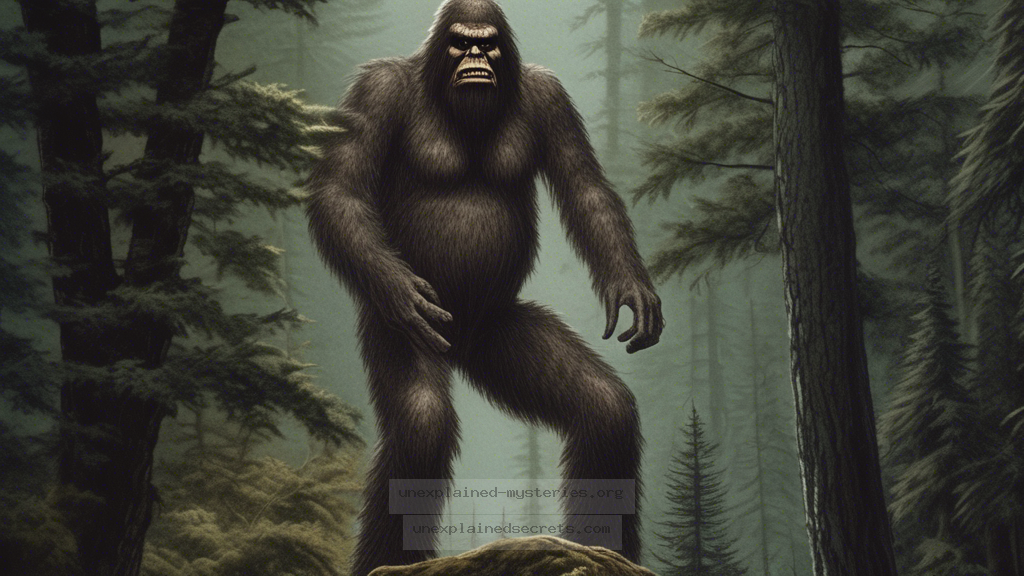What Was the Significance of the 1967 Patterson-Gimlin Film in the Bigfoot Phenomenon?
What Was the Significance of the 1967 Patterson-Gimlin Film in the Bigfoot Phenomenon?
The Patterson-Gimlin film, shot in 1967, remains one of the most famous pieces of evidence in the ongoing debate surrounding Bigfoot’s existence. This question matters because it not only encapsulates the essence of cryptozoology but also has implications for the credibility of eyewitness accounts, the impact of media on folklore, and the scientific community’s approach to unexplained phenomena. The film continues to spark interest and controversy, making it a focal point for both skeptics and believers alike.
Historical Context of the Patterson-Gimlin Film
The Patterson-Gimlin film was shot on October 20, 1967, in Bluff Creek, California, by Roger Patterson and Bob Gimlin, two individuals who claimed to have encountered a Bigfoot while riding horses in the remote forest. The film itself, which lasts about 59.5 seconds, shows a large, hairy creature walking bipedally through the woods. This unprecedented footage quickly gained attention, fueling both fascination and skepticism regarding the existence of Bigfoot.
In the years leading up to the film’s release, interest in Bigfoot had already been growing in the United States, particularly after reports from the Pacific Northwest. The film served as a catalyst, propelling the Bigfoot phenomenon into mainstream culture. It was featured in various television programs, news articles, and documentaries, which further solidified its place in cryptozoological history.
The Core Concepts of the Film
What sets the Patterson-Gimlin film apart from other alleged Bigfoot sightings is its visual evidence and the circumstances under which it was recorded. The film depicts a creature measuring approximately 7 to 8 feet tall, covered in dark hair, and walking with a unique gait that some experts argue is not characteristic of humans or known animals. The film’s authenticity has been debated extensively, leading to a variety of theories about the creature’s identity.
Several core concepts emerge from the analysis of this film:
- Physical Evidence: The film provides visual evidence that supports the existence of a large, unknown primate in North America.
- Behavioral Analysis: The creature’s movements and gait have been studied extensively, with some suggesting that it exhibits characteristics of a non-human species.
- Authenticity Debates: The film has been scrutinized for signs of manipulation, including the possibility of a costume or special effects.
Practical Implications and Evidence
The Patterson-Gimlin film has practical implications that extend beyond mere entertainment. Its significance lies in how it has influenced public perception and scientific inquiry into the existence of cryptids. The film has led to various investigations, expeditions, and even the establishment of organizations dedicated to the study of Bigfoot.
One of the most notable aspects of the film is its capacity to galvanize citizen scientists and enthusiasts to search for evidence of Bigfoot. Many expeditions have sought to replicate the conditions of the original filming, while others have focused on gathering physical evidence, such as hair samples or footprints, in similar regions of the Pacific Northwest.
Key Point: The Patterson-Gimlin film serves as a foundational piece of evidence that has inspired numerous investigations and research efforts in cryptozoology.
Alternative Perspectives: Skeptics vs. Believers
The film has not only captured the imagination of believers but has also attracted a significant amount of skepticism. Critics argue that the film is a hoax, pointing to various aspects that they claim indicate it was staged. Key arguments from skeptics include:
- Costume Theory: Some suggest that the creature seen in the film is a person in a costume, citing the lack of detail in some frames as evidence.
- Manipulation Claims: There have been assertions that the film was edited or altered to enhance its credibility.
- Inconsistencies in Accounts: Skeptics point to discrepancies in Patterson and Gimlin’s narratives over the years as evidence that they may have fabricated the encounter.
On the other hand, believers argue that the film stands up to scrutiny and that its authenticity is supported by expert analyses. They emphasize the following points:
- Expert Endorsements: Some scientists and film analysts have claimed that the movement and physicality of the creature are not consistent with a person in a suit.
- Historical Context: The film was recorded during a time when special effects were not as advanced, making it less likely that such a convincing hoax could have been created.
Common Misconceptions and Clarifications
Given the film’s notoriety, numerous misconceptions have arisen over the years. One common misconception is that the film’s authenticity is universally accepted among cryptozoologists. In reality, the Bigfoot community is divided, with some seeing the film as definitive proof and others treating it as inconclusive evidence.
Another misconception is that all Bigfoot sightings are based on the film. In fact, there have been numerous reports of Bigfoot encounters that have occurred independently of the film, each adding layers to the legend.
Warning: Relying solely on the Patterson-Gimlin film for proof of Bigfoot can lead to confirmation bias; it’s important to consider a wide range of evidence and perspectives.
Best Practices for Investigation and Study
For those interested in investigating the Bigfoot phenomenon, there are some best practices to consider. First, it is essential to approach the subject with an open but critical mind. Here are some strategies for effective investigation:
- Document Everything: Keep detailed records of sightings, encounters, and evidence collections.
- Engage with Experts: Collaborate with scientists, wildlife experts, and seasoned cryptozoologists to gain insights and knowledge.
- Use Technology: Employ modern technology such as motion-activated cameras, audio recorders, and drones to capture evidence.
Additionally, engaging with the local community and learning about indigenous folklore can provide valuable context and insights into historical sightings and the cultural significance of Bigfoot.
Future Developments and Ongoing Research
The Patterson-Gimlin film continues to inspire ongoing research and exploration into the Bigfoot phenomenon. With advancements in technology, including DNA analysis and wildlife tracking, researchers are optimistic about uncovering new evidence. There are also ongoing discussions about the ethical implications of studying cryptids, particularly regarding respect for local cultures and ecosystems.
As more individuals become involved in the search for Bigfoot, the potential for new discoveries remains high. The combination of traditional fieldwork and modern science may one day yield definitive answers about the existence of this elusive creature.
Conclusion: The Enduring Legacy of the Patterson-Gimlin Film
The Patterson-Gimlin film serves as a significant piece of the Bigfoot puzzle, encapsulating the mysteries, debates, and cultural significance surrounding this legendary creature. While skeptics may challenge its authenticity, the film’s legacy continues to inspire both amateur enthusiasts and seasoned researchers alike. Its impact on public perception and the field of cryptozoology is undeniable, making it a cornerstone of the ongoing quest to uncover the truth behind Bigfoot.
In summary, the film raises questions about evidence, belief, and the nature of mystery itself, reminding us that the pursuit of the unknown is as important as the answers we seek.
Other Articles
Recent Posts
- What Happened to Flight MH370? The Conspiracy Theories That Still Haunt Us
- What Secrets Lurk Within the Walls of the Infamous Trans-Allegheny Lunatic Asylum?
- What Evidence Supports the Existence of Bigfoot in the Pacific Northwest?
- What Happened to the Indus Valley Civilization? Unraveling the Mysteries of Ancient Urban Life
- Can Telepathy Be Scientifically Proven Through Laboratory Evidence?







